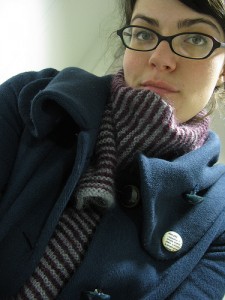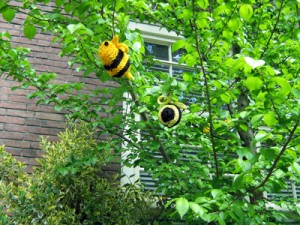In the last few years, there’s been a veritable plethora of movies (and television shows in Canada and the US) that are about science and technology or have a significant component or investigate the social impact. The trend does not seem to be slowing.
This first of two parts features the film, *Hidden* Figures, and a play being turned into a film, Photograph 51. The second part features the evolving Theranos story and plans to turn it into a film, The Man Who Knew Infinity, a film about an Indian mathematician, the science of the recent all woman Ghostbusters, and an ezine devoted to science films.
For the following movie tidbits, I have David Bruggeman to thank.
Hidden Figures
From David’s June 21, 2016 post on his Pasco Phronesis blog (Note: A link has been removed),
Hidden Figures is a fictionalized treatment of the book of the same name written by Margot Lee Shetterly (and underwritten by the Sloan Foundation). Neither the book nor the film are released yet. The book is scheduled for a September release, and the film currently has a January release date in the U.S.
Both the film and the book focus on the story of African American women who worked as computers for the government at the Langley National Aeronautic Laboratory in Hampton, Virginia. The women served as human computers, making the calculations NASA needed during the Space Race. While the book features four women, the film is focused on three: Katherine Johnson (recipient of the Presidential Medal of Freedom), Dorothy Vaughan, and Mary Jackson. They are played by, respectively, Taraji P. Henson, Octavia Spencer, and Janelle Monae. Other actors in the film include Kevin Costner, Kirsten Dunst, Aldis Hodge, and Jim Parsons. The film is directed by Theodore Melfi, and the script is by Allison Schroeder.
*ETA Oct. 6, 2016: The book ‘Hidden Figures’ is nonfiction while the movie is a fictionalized adaptation based on a true story.*
According to imdb.com, the movie’s release date is Dec. 25, 2016 (this could change again).
The history for ‘human computers’ stretches back to the 17th century, at least. From the Human Computer entry in Wikipedia (Note: Links have been removed),
The term “computer”, in use from the early 17th century (the first known written reference dates from 1613),[1] meant “one who computes”: a person performing mathematical calculations, before electronic computers became commercially available. “The human computer is supposed to be following fixed rules; he has no authority to deviate from them in any detail.” (Turing, 1950) Teams of people were frequently used to undertake long and often tedious calculations; the work was divided so that this could be done in parallel.
Prior to NASA, a team of women in the 19th century in the US were known as Harvard Computers (from the Wikipedia entry; Note: Links have been removed),
Edward Charles Pickering (director of the Harvard Observatory from 1877 to 1919) decided to hire women as skilled workers to process astronomical data. Among these women were Williamina Fleming, Annie Jump Cannon, Henrietta Swan Leavitt and Antonia Maury. This staff came to be known as “Pickering’s Harem” or, more respectfully, as the Harvard Computers.[1] This was an example of what has been identified as the “harem effect” in the history and sociology of science.
It seems that several factors contributed to Pickering’s decision to hire women instead of men. Among them was the fact that men were paid much more than women, so he could employ more staff with the same budget. This was relevant in a time when the amount of astronomical data was surpassing the capacity of the Observatories to process it.[2]
The first woman hired was Williamina Fleming, who was working as a maid for Pickering. It seems that Pickering was increasingly frustrated with his male assistants and declared that even his maid could do a better job. Apparently he was not mistaken, as Fleming undertook her assigned chores efficiently. When the Harvard Observatory received in 1886 a generous donation from the widow of Henry Draper, Pickering decided to hire more female staff and put Fleming in charge of them.[3]
While it’s not thrilling to find out that Pickering was content to exploit the women he was hiring, he deserves kudos for recognizing that women could do excellent work and acting on that recognition. When you consider the times, Pickering’s was an extraordinary act.
Getting back to Hidden Figures, an Aug.15, 2016 posting by Kathleen for Lainey Gossip celebrates the then newly released trailer for the movie,
If you’ve been watching the Olympics [Rio 2016], you know how much the past 10 days have been an epic display of #BlackGirlMagic. Fittingly, the trailer for Hidden Figures was released last night during Sunday’s Olympic coverage. It’s the story of three brilliant African American women, played by Taraji P Henson, Octavia Spencer and Janelle Monae, who made history by serving as the brains behind the NASA launch of astronaut John Glenn into orbit in 1962.
Three black women helped launch a dude into space in the 60s. AT NASA. Think about how America treated black women in the 60s. As Katherine Johnson, played by Taraji P Henson, jokes in the trailer, they were still sitting at the back of the bus. In 1962 Malcolm X said, “The most disrespected person in America is the Black woman, the most unprotected person in America is the Black woman. The most neglected person in America is the Black woman.” These women had to face that truth every day and they still rose to greatness. I’m obsessed with this story.
Overall, the trailer is good. I like the pace and the performances look strong. …
…
I’m most excited for Hidden Figures (as Lainey pointed out, this title is THE WORST) because black girls are being celebrated for their brains on screen. That is rare. When the trailer aired, my brother Sam texted me, “WHOA, a smart black girl movie!”
*ETA Sept. 5, 2016: Aran Shetterly contacted me to say this:
What you may not know is that the term “Hidden Figures” is a specific reference to flight science. It tested a pilot’s ability to pick out a simple figure from a set of more complex, difficult to see images. http://www.militaryaptitudetests.com/afoqt/
Thank you Mr. Shetterly!
Photograph 51 (the Rosalind Franklin story)
Also in David’s June 21, 2016 post is a mention of Photograph 51, a play and soon-to-be film about Rosalind Franklin, the discovery of the double helix, and a science controversy. I first wrote about Photograph 51 in a Jan. 16, 2012 posting (scroll down about 50% of the way) regarding an international script writing competition being held in Dublin, Ireland. At the time, I noted that Anna Ziegler’s play, Photograph 51 had won a previous competition cycle of the screenwriting competition. I wrote again about the play in a Sept. 2, 2015 posting about its London production (Sept. 5 – Nov. 21, 2015) featuring actress Nicole Kidman.
The versions of the Franklin story with which I’m familiar paint her as the wronged party, ignored and unacknowledged by the scientists (Francis, Crick, James Watson, and Maurice Wilkins) who got all the glory and the Nobel Prize. Stephen Curry in a Sept. 16, 2015 posting on the Guardian science blogs suggests the story may not be quite as simple as that (Note: A link has been removed),
Ziegler [Anna Ziegler, playwright] is up front in admitting that she has rearranged facts to suit the drama. This creates some oddities of chronology and motive for those familiar with the history. I know of no suggestion of romantic interest in Franklin from Wilkins, or of a separation of Crick from his wife in the aftermath of his triumph with Watson in solving the DNA structure. There is no mention in the play of the fact that Franklin published her work (and the famous photograph 51) in the journal Nature alongside Watson and Crick’s paper and one by Wilkins. Nor does the audience hear of the international recognition that Franklin enjoyed in her own right between 1953 and her untimely death in 1958, not just for her involvement in DNA, but also for her work on the structure of coal and of viruses.
Published long after her death, The Double Helix is widely thought to treat Franklin unfairly. In the minds of many she remains the wronged woman whose pioneering results were taken by others to solve DNA and win the Nobel prize. But the real story – many elements of which come across strongly in the play – is more complex*.
…
Franklin is a gifted experimentalist. Her key contributions to the discovery were in improving methods for taking X-ray pictures of and discovering the distinct A and B conformations of DNA. But it becomes clear that her methodical, meticulous approach to data analysis – much to Wilkins’ impotent frustration – eventually allows the Kings ‘team’ to be overtaken by the bolder, intuitive stratagem of Watson and Crick.
…
Curry’s piece is a good read and provides insight into the ways temperament affects how science is practiced.
Interestingly, there was a 1987 dramatization of the ‘double helix or life story’ (from the Life Story entry on Wikipedia; Note: Links have been removed),
The film tells the story of the rivalries of the two teams of scientists attempting to discover the structure of DNA. Francis Crick and James D. Watson at Cambridge University and Maurice Wilkins and Rosalind Franklin at King’s College London.
The film manages to convey the loneliness and competitiveness of scientific research but also educates the viewer as to how the structure of DNA was discovered. In particular, it explores the tension between the patient, dedicated laboratory work of Franklin and the sometimes uninformed intuitive leaps of Watson and Crick, all played against a background of institutional turf wars, personality conflicts and sexism. In the film Watson jokes, plugging the path of intuition: “Blessed are they who believed before there was any evidence.” The film also shows why Watson and Crick made their discovery, overtaking their competitors in part by reasoning from genetic function to predict chemical structure, thus helping to establish the then still-nascent field of molecular biology.
You can find out more about the stars, crew, and cast here on imdb.com
In addition to Life Story, the dramatization is also sometimes titled as ‘The Race for the Double Helix’ or the ‘Double Helix’.
Getting back to Photograph 51 (the film), Michael Grandage who directed the stage play will also direct the film. Grandage just made his debut as a film director with ‘Genius’ starring Colin Firth and Jude Law. According to this June 23, 2016 review by Sarah on Laineygossip.com, he stumbled a bit by casting British and Australian actors as Americans,
The first hurdle to clear with Genius, the feature film debut of English theater director Michael Grandage, is that everyone is played by Brits and Aussies, and by “everyone” I mean some of the most towering figures of American literature. You cast the best actor for the role and a good actor can convince you they’re anyone, so it shouldn’t really matter, but there is something profoundly odd about watching a parade of Lit 101 All Stars appear on screen and struggle with American accents. …
That kind of casting should not be a problem with Photograph 51 where the action takes place with British personalities.
Part 2 is here.
*’Human’ corrected to ‘Hidden’ on Sept. 5, 2016.
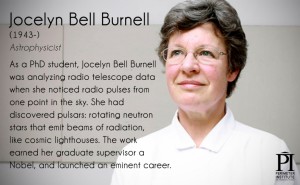
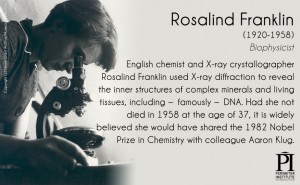
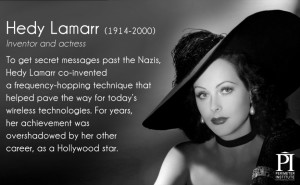
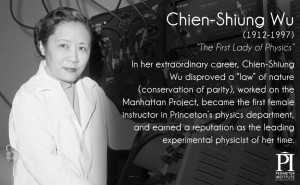

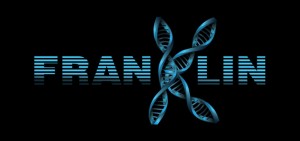
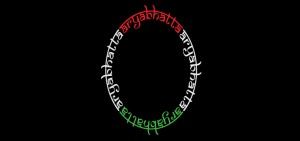
![Named for astronomer Cecilia Payne, our first side seamed shortie is made from smooth comfortable strecth fabrics and topped with reclaimed lace. A pretty lettuce edge hem finishes them off - and we can't wait to show you the next colours we have planned... [downloaded from http://www.whomadeyourpants.co.uk/pages/shop]](http://www.frogheart.ca/wp-content/uploads/2013/08/Ceclia_pants.jpg)
![Named for Rosalind Franklin, the higher cut shortie is based on a shape our designer saw and loved in Brazil. Smooth lycra or jersey is edged with reclaimed stretch lace for a stay put, no VPL, all day every day style. A great shape to show off gorgeous print fabrics [downloaded from http://www.whomadeyourpants.co.uk/pages/shop]](http://www.frogheart.ca/wp-content/uploads/2013/08/Rosalind_pant.jpg)
